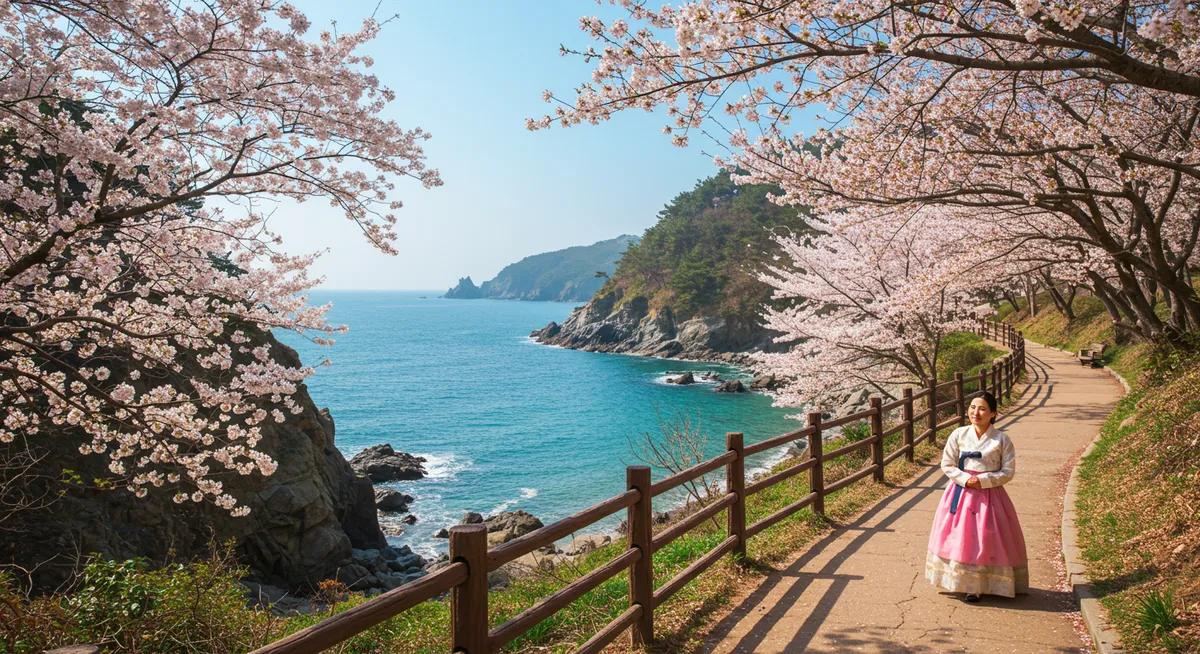
Best Time to Visit Seogwipo, South Korea
Table of Contents
Want to find the best travel deals for this destination? Chat with our travel hacking specialist!
Get Travel HacksCategory: best-time-to-visit-seogwipo
Discover the Best Time to Visit Seogwipo, South Korea
Having explored the stunning landscapes of Jeju Island extensively, I can confidently say that timing your visit to Seogwipo is crucial for the perfect experience. This vibrant city on Jeju's southern coast offers diverse attractions, from cascading waterfalls to lush tangerine farms, which transform with each season. Choosing the best time to visit Seogwipo truly enhances your journey, ensuring you catch the weather, activities, and scenery you desire. This guide breaks down each season, providing insights into what to expect and helping you plan your unforgettable Seogwipo adventure.
Spring (April-May): Blooming Beauty & Mild Weather
Spring heralds one of the most delightful periods to explore Seogwipo. From late March through April, the city bursts into color as cherry blossoms adorn streets and landscapes. Temperatures are wonderfully mild, typically ranging from 10°C to 20°C (50-68°F), making it perfect for outdoor activities without the summer humidity. You'll find fewer crowds compared to peak summer, allowing for more serene enjoyment of attractions like Cheonjiyeon Falls. As a seasoned traveler, I always recommend experiencing Jeju's vibrant spring; it's when the island truly comes alive. For a comprehensive overview of the city, delve into our detailed Seogwipo travel guide.
Summer (June-August): Vibrant & Lively Coastal Escapes
Summer transforms Seogwipo into a lively coastal haven, ideal for those seeking sun and sea. While temperatures can reach 25-30°C (77-86°F), the ocean breezes often provide relief. This is prime season for beach activities at Jungmun Saekdal Beach and exploring the city’s famous waterfalls. However, it's also the busiest time, so expect larger crowds and higher accommodation prices. My personal tip: visit early in the morning to beat both the heat and the influx of tourists. To make the most of your trip, explore our guide to top Seogwipo attractions and sightseeing for unforgettable experiences.
Autumn (September-November): Golden Hues & Perfect Hiking
Autumn is arguably the absolute best time to visit Seogwipo for many, myself included. The weather is crisp and pleasant, with temperatures usually between 15°C and 25°C (59-77°F), offering a comfortable climate for extensive exploration. The island’s volcanic terrain transforms into a spectacular display of golden and crimson foliage, particularly around Hallasan National Park. This season is perfect for hiking, cycling, and enjoying the numerous outdoor festivals. Crowds begin to thin out after the summer rush, providing a more relaxed atmosphere. When planning your stay, consider our recommendations on where to stay in Seogwipo for the best autumn views.
Winter (December-March): Tranquil & Unique Charm
Winter in Seogwipo offers a unique, tranquil charm often overlooked by travelers. While temperatures can drop to 5°C (41°F) or below, especially at night, the southern coastal region generally avoids heavy snow, except for the higher elevations of Hallasan. This season is perfect for enjoying the city's indoor attractions, sampling fresh Jeju tangerines, and experiencing a quieter side of the island. For photography enthusiasts, a snow-capped Hallasan against the blue ocean creates breathtaking vistas. Getting to Seogwipo is straightforward; check our guide on how to get to Seogwipo from Jeju Airport, ensuring a smooth winter arrival.
Frequently Asked Questions
What is the warmest month in Seogwipo?
When is the typhoon season in Seogwipo?
Is Seogwipo crowded?
Deciding the best time to visit Seogwipo ultimately depends on your personal preferences and what you hope to experience. Whether you dream of vibrant spring blossoms, lively summer beaches, picturesque autumn foliage, or the serene calm of winter, Seogwipo offers a distinct charm year-round. Each season presents unique opportunities to engage with this stunning South Korean city. Plan your trip wisely to maximize your enjoyment, ensuring your Seogwipo adventure aligns perfectly with your ideal travel conditions. Explore the distinct beauty each season unveils!